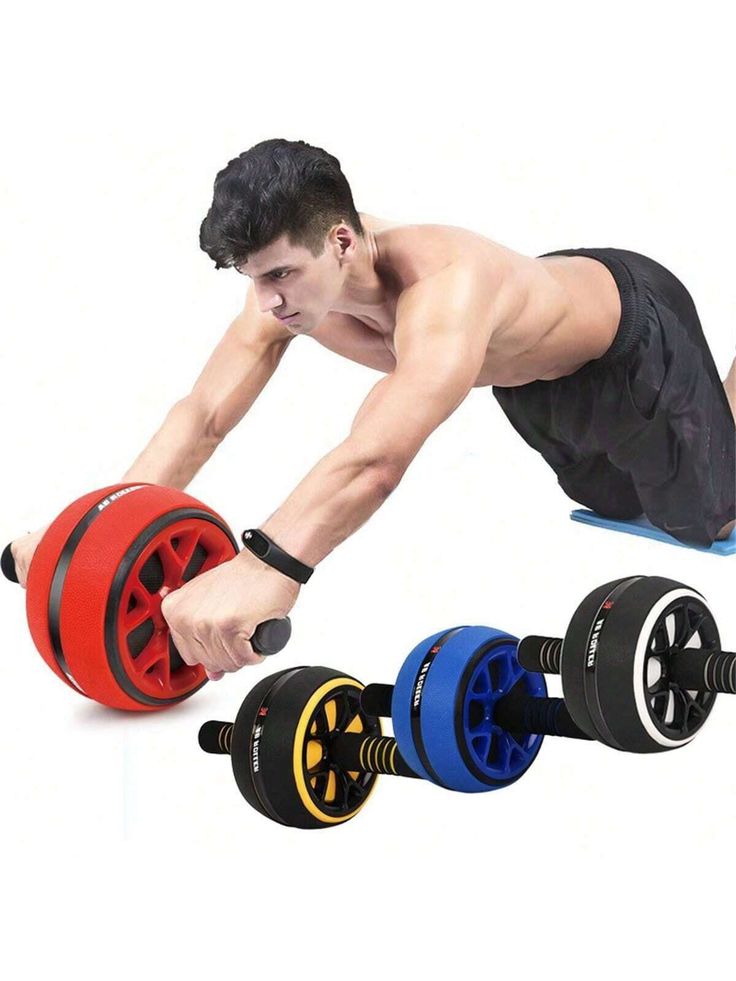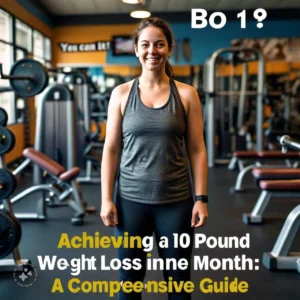It is important to know the way of targeting the muscles when you have a goal of improving your fitness level. From finding out how to plan a workout that perfectly chisels you a superhero body to further enhancing each workout session, this guide will give you the information you require. We’ll also discuss which muscle you want to work out to resemble Captain America, the number of exercises and sets that should be incorporated while training the muscles. Furthermore we’ll discuss what sequences it is advised to arrange the visit of various muscles and the use of planks during workouts.
Understanding Muscle Groups
Muscle groups may be described as a set of muscles, which cooperatively move in harmony to bring about certain movements, and. Each group works in different functions and they are essential parts of general strength and body mechanics. In order to develop an appropriate program for workouts, one should be aware about the kinds of muscles that exercises used for training control and how they are best placed.
Target Muscle Groups Involved with the use of Planks
I would like to know which muscles are involved with planks.
Planks are very popular in most fitness workouts because they target several groups of muscles at once. When performed correctly, planks primarily target the following muscle groups:When performed correctly, planks primarily target the following muscle groups:
Core Muscles: Many people are aware that planks are good for the development of the abdominal muscles. These exercises primarily involve the rectus abdominis (the flat muscles in the front of your abdomen), your pectoral (or outer) obliques and your transversus abdominis (the muscle behind the rectus abdominis). Most of these muscles act to fix the spine and pelvis while undergoing the exercise.
Shoulders: Plank position is not easy to maintain as it demands both shoulder and abdominal support and strength. Servicing muscles comprise the front deltoids, side deltoids and the rear deltoids to uphold the stance.
Back Muscles: They also engage the muscles which are located along the spine, such as erector spinae and rhomboid muscles in order to maintain the appropriate back posture.
Glutes: The gluteal muscles include gluteus maximus, medius and minimus and are involved in hip stability whereby they maintain the body in a straight line.
Legs: Although major muscles of bend are not involved, small contributions are made by quadriceps and hamstrings in supporting the body and maintaining plank position.
Adding planks into your regime helps work on most of the core muscles and stabilizer muscles which is very essential for any human being’s fitness regime.
How Many Exercises Per Muscle Group?
For workout with regards to the number of exercises performed on every muscle group, it greatly influences your progress and muscle build up when mapping out a workout regime. Here’s a general guideline to help you optimize your workouts:Here’s a general guideline to help you optimize your workouts:
For Beginners: This means that an individual should perform 1-2 graphics exercises for every muscle group in his/her body.
For those who are beginners, you should stick to basic and maximum 2 exercises that work on a specific muscle. This enables you to perfect form and establish a strength base on which your body will progressively work through to advance level exercises. Some of the basic exercises include bench press for chest or squat for legs for instance.
For Intermediate Lifters: Muscle Groups: 2-4 exercising routines for each muscle group
Besides, progressing from one exercise to another, more exercises that address different zones of the muscle should be incorporated. For instance, including the flat bench press and incline bench presses will ensure the chest muscle is trained from varying positions thus resulting in muscle symmetry.
For Advanced Lifters: Small Muscle Groups: 4-6 Exercises
It is recommended that for every muscle group, one should do 4-6 exercises so as to cover all aspects of the muscle for improved definition and strength. That means certain exercises may be compound motion and others may be isolation exercises like leg extensions and deadlifts for the legs respectively.
How many sets must be performed for each muscle group?
Sets greatly determine the exercise regime that you need to achieve your fitness goals with regard to the number of sets that you do for every muscle group. Here’s a breakdown of recommended sets based on your experience level:Here’s a breakdown of recommended sets based on your experience level:
Beginners: 4 sets per muscle group or 3 sets per muscle group
For first time resistance trainers,. 3-4 sets per muscle group are ideal. What this volume entails enables one to also develop strength and endurance without having to overtrain.
Intermediate Lifters: Sets within the range of 4-6 for each muscle group.
As for intermediate lifters, the increase in the sets’ number to 4-6 per muscular group is useful. Others do it to help in the growth of muscle bulk and mass by helping in increasing the general training volume.
Advanced Lifters: Muscle groups were also in the range of 6-8 sets.
An intermediate level user may opt to do 6-8 sets per muscle group in order to achieve more development of their muscles and definition. Faster contraction speeds are typically applied for training with higher volume levels that is required by more advanced training methods like supersets or drop sets.
Different Organization on how to Exercise all the Muscles of the Body
There is flexibility needed in the order through which the various muscles are exercised so as to enhance performance and effectiveness. Here’s a recommended approach to structuring your workouts:Here’s a recommended approach to structuring your workouts:
Prioritize Larger Muscle Groups
Warming up is a critical success factor in your training regime; incorporating isolation with compound movements, which involve the larger muscles in the chest, back, and legs. These muscle groups in most cases need more energy and strength; therefore, by doing these exercises first, one is sure he can lift more weight and do more challenging exercises when he or she is full of energy.
It is Note worthy that Compound movements should be focused on first
The first exercise types include compound exercises that involve several muscles and joints at a time. For instance, use squat or deadlift for legs, bench press for chest and use pull up for back muscles. These movements I consider are essential in developing mass, therefore should be done initially in any fitness programme.
This means moving from large muscle groups to small muscle groups.
Compound exercises target large muscles, so once you are through with them, you should take time and work the smaller muscles like the biceps, triceps, and calves. These muscles are worked separately from the other muscles and this can be done with the curls or tricep extensions and this does not use a lot of energy in the body.
End with Isolation Exercises
Finish your workout with isolation exercises that involve individual muscles in the body. This serves to give you an optimal ability to fatigue your muscle group and even better work on your muscles building up for a well chiseled look. For instance, perform leg extension or lateral raise after you are done adding your main leg or shoulder move.
Include Core Workouts
It is advisable to introduce such core exercises as planks or crunches at the last few sets of your sets or do all the core exercises as set routines of exercise! The core muscles can be defined as the central muscles that are involved in maintaining structural integrity as well as stability of the body in the course of performing exercises and other activities; hence, functional core strength is crucial.
Which Muscles Should be Worked to Get that Captain America Body
In a bid to look like Captain America the following muscles need to be worked on to attain a balanced look of the superhero. Here’s a breakdown of the muscle groups to focus on:Here’s a breakdown of the muscle groups to focus on:
Chest Muscles (Pectorals)
Thus, a broad and muscular chest can be considered a major advantage to possess during its development. A man needs to pay a lot of attention. Other workouts such as the bench press, incline press and the chest flys will assist in developing a muscular chest.
Back Muscles
A strong back is also a V-shape which a superhero has and this can also be something a man desires to have. Use pull-ups, rows and lat pulldown movements to increase the width of one’s back as well as the size of the individual muscles that it is made out of.
Shoulders (Deltoids)
Broad and well developed shoulders also enhance the looks of the body by giving an impression of a muscular trimester body. To get round shoulders, try to concentrate on shoulder presses, lateral raises, and rear delt flys.
Arms (Biceps and Triceps)
It is very important to have well-built arms if one has to have a good build up of muscles in his body. Do the curling movements particularly in the biceps and triceps to gain muscular and toned arms.
Leg Muscles
As it has been elucidated, stout legs are necessary for a good build of the body. Compound movements such as squats, lunges and deadlift will aid in the generation of lean powerful quads, hamstrings together with glutes.
Core Muscles
Core muscles help in increasing general body and functional muscle strength. Planks, leg raises and Russian twists should be done frequently in order to achieve abs muscles.
Are you interested in how to make a stimulating workout plan?
To balance and enhance the effectiveness of the workout apply the principles discussed in the paper. Here’s an example of a weekly workout split that targets all major muscle groups:Here’s an example of a weekly workout split that targets all major muscle groups:
Monday: Chest and Triceps
Bench Press: Four, groups 8- 12 reps
Incline Dumbbell Press: 3 sets of 10 twelve reps
Chest Flys: Standard three sets with repetitions being 12-15 times.
Tricep Dips: 4 cycles of the respective range of 10-12.
Tricep Extensions: The third exercise is three series that consist in 12-15 repetitions.
Tuesday: Back and Biceps
Pull-Ups: Four sets for each with rep ranges of 8 to 12 reps.
Bent Over Rows: Four ranges of eight to twelve reps
Lat Pulldowns: 3 sets of reps of 10-12.
Bicep Curls: Four, ten to twelve reps for each set.
Hammer Curls: For the 3 sets of 12-15 reps it was observed that the intensity was high.
Wednesday: Rest or Light Cardio to help in muscle recovery which is aiming at reducing muscle soreness that is likely to occur after an intensive session of weight training.
Thursday: Legs
Squats: 4 groups of 8 to 12 repetitions
Deadlifts: Movements – Squats 4 sets of 8-12 reps
Lunges: 3 sets of 12-15 reps to the leg dorsiflexion.
Leg Press: Three approaches of ten to twelve repetitions
Calf Raises: Benchmark: The number of sets is 4 that should consist of 15-20 repetitions.
Friday: Shoulders and Abs
Shoulder Press: Four ladders of eight-twelve reps.
Lateral Raises: Three series of 12 to 15 repetitions are acceptable.
Front Raises: 3 series of 12 – 15 repetitions
Rear Delt Flys: 3 Sets of twelve to fifteen repetitions
Planks: Repeat it 3 times in one minute for 3 attempts.
Russian Twists: It is recommended that 3 sets of 20 repetitions for each side is done.
Saturday: Active Recovery or Cardio is heart pumping activity that is carried out in the midst of recovery periods.
Sunday: Rest





